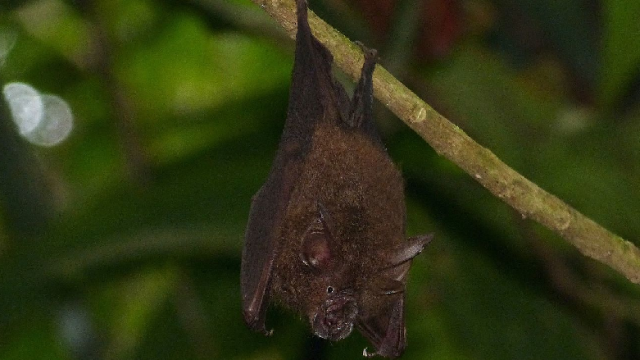If you’ve had a cup of coffee recently, the plants it grew on may once have been home to bats and other threatened wildlife. It turns out that when coffee plantations encroach on natural forest habitat, bats are happy to live in the coffee.
A Biodiversity Hotspot
The Western Ghats mountain range runs along the western edge of the Indian subcontinent. The area around the Western Ghats is home to over 9,000 plant species and 6000 insect species, as well as 500 species of birds, 179 amphibian species, and 139 mammal species, making the Western Ghats the eighth most biologically diverse place on Earth. Most of that biodiversity is found in the mountainous rain forests at the southern end of the range. Ecologists labelled the area a biodiversity hotspot in 2000, making it a priority for conservation efforts.
But the Western Ghats are also home to the highest human population of any of the world’s ten biodiversity hotspots. Thanks to human land use, only about 6% of the region’s original habitat remains, mostly as patches of forest at the edges of coffee and tea plantations.
Researcher Claire Wordley from the University of Leeds wanted to know how wildlife in the Western Ghats was coping with the loss of so much of its original habitat to agriculture. According to ecologists, bats are good indicators of how the rest of an ecosystem is doing, so Wordley and her team took to the field in the Western Ghats to study how ten bat species had adapted to forests, tea plantations, and coffee plantations.
“By looking at bats — which are excellent bioindicators — we are able to learn not only what these changes in the environment mean for bats, but also for wildlife in general,” said biologist John Altingham in a statement. The team published their results in the journal Biological Conservation.
Bats in the Coffee
It came as no surprise that most bat species preferred the forest fragments, especially near rivers. But they seemed almost as fond of coffee plantations.
Arabica coffee is one of the most popular coffee species around the world, and it grows best in the shade. In the Western Ghats, that means that most coffee plantations are sheltered beneath rainforest canopies, which preserves the natural trees of the rainforest but replaces the natural undergrowth with coffee plants. It’s an accidental compromise with local habitats, but it seems to work for the region’s wildlife.
“The coffee bushes grow really big, and when you walk through these plantations, the richness of the wildlife is obvious — you see monkeys, Indian bison, and elephants,” said Wordley in a statement. “They are serving as refuges for biodiversity in the landscape.”
That’s definitely true for bats, whose communities are nearly as rich and diverse among the coffee plants as in the remaining patches of native forest.
Of course, the coffee plantations aren’t as good for wildlife as natural forest, based on Wordley’s study of bats, but they’re a much better option than the tea plantations that have also pushed out much of the forest in the Western Ghats. None of the bat species in Wordley’s study preferred tea plantations, and two species — the lesser woolly horseshoe bat and the lesser false vampire bat — never seemed to spend time in the tea plantations at all. On the other hand, several species did manage to make use of the man-made habitat offered by the tea plantations.
That’s largely thanks to nearby forest patches and coffee plantations, according to Wordley, which give bats and other wildlife refuges and let them make some use of nearby tea plantations. And Wordley says that if tea plantations maintain patches of forest, especially near rivers, bats can still thrive in the area.
Agriculture and Nature
The coffee plantations of the Western Ghats are a good example of how blending agricultural land use with natural habitats can help preserve wildlife. “Further deforestation would be a serious threat to these species,” said Wordley, “but the good news is that they are, for the moment, surviving in small forest patches, riverine habitats, and in coffee plantations.”
The mixed use approach also benefits the area’s human population. Trees help hold the soil in place, which prevents erosion and reduces the risk of landslides. That’s an important factor in a mountainous area like the Western Ghats, where heavy rains are a regular occurrence.
That’s an important message, because balanced land use is probably the only way to preserve the Western Ghats’ rich biodiversity, and it could serve as a useful example for other regions where human activity encroaches on sensitive habitats. “If bats and other wildlife are to thrive in the Ghats, a careful balance of land use is necessary,” cautioned Wordley in a statement.
Top image: Bernard Dupont via Wikimedia Commons
